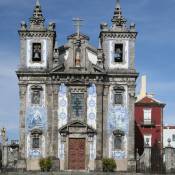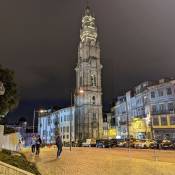Estação de São Bento
São Bento is Porto's central station, although the exterior of this grand building barely hints at its purpose. Completed in 1916 the station is built on the site of a 16th century Benedictine monastery - from which the name São Bento is derived.
The monastery itself was almost destroyed by fire in 1783, and despite being rebuilt was barely standing at the end of the 19th century.
São Bento Railway Station was designed by a local architect, José Marques da Silva, with much of the influence coming from the French Beaux-Arts style. The first stone was laid by King Carlos I in 1900, although he was assassinated eight years later, before the station was completed.
Perhaps the best-known feature of the Estação de São Bento is the magnificent tilework in the main vestibule. These azulejo masterpieces consist of around 20 thousand tiles and depict a range of historic events along with scenes of Portuguese life and the history of transport. They are the work of Jorge Colaço, the most eminent azulejo painter of the day. He spent over 10 years painting the epic scenes which include the Battle of Valdevez (1140), the meeting of the knight Egas Moniz and Alfonso VII of León (12th century), the arrival of King John I and Philippa of Lancaster in Porto (1387) and the Conquest of Ceuta (1415).









